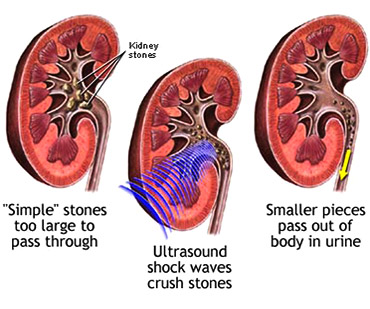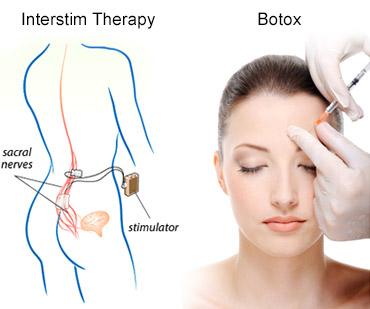
Urology/Andrology Treatment at Super Speciality Hospitals in India
Urology, also known as genitourinary surgery, is the branch of medicine that focuses on surgical and medical diseases of the male and female urinary tract system and the male reproductive organs. The organs under the domain of urology include the kidneys, adrenal glands, ureters, urinary bladder, urethra, and the male reproductive organs (testes, epididymis, vas deferens, seminal vesicles, prostate, and penis).
Why are HealthTripToIndia affiliated hospitals in India the leading Destination for Organ Transplant Surgery
Highly skilled surgical teams with vast experience and excellent track record of doing largest numbers of Live related donor kidney and liver transplants with survival rates comparable to world's best centers.
Most advanced Technology Infrastructure - Blood Bank with 24 hour apharesis facility, advanced laboratory and microbiology (infection control) support, advanced cardiology, DSA and interventionalradiology, portable and colour ultra-sonology, Liver Fibro-scan, 64 slice CT scanner, 3 T MRI, PET-CT and nephrology (including 24 hour dialysis and CVVHD) facilities.
Cosmetic and Aesthetic Surgery at Super Speciality Hospitals In India
Laser Prostate (TURP) Surgery
A transurethral resection of the prostate (TURP) is a surgical procedure that involves cutting away a section of the prostate. he prostate is a small gland in the pelvis only found in men. It's located between the penis and bladder, and surrounds the urethra (the tube that carries urine from the bladder to the penis). If the prostate becomes enlarged, it can place pressure on the bladder and urethra. This can cause symptoms that affect urination
Read More →
Non-Surgical Treatment for Urinary Stones
Kidney stones, or renal calculi, are solid masses made of crystals. Kidney stones usually originate in your kidneys, but can develop anywhere along your urinary tract. The urinary tract includes the kidneys, ureters, bladder, and urethra. Kidney stones are known to be one of the most painful medical conditions. The causes of kidney stones vary according to the type of stone.
Read More →
Percutaneous Nephrolithotomy (PCNL) Surgery
Percutaneous Nephrolithotomy (PCNL) is the preferred technique for treating large stones (over 2cm in diameter) within the kidney. It involves keyhole surgery performed through a 1cm incision in the skin overlying the kidney (see diagram).
Read More →
Prostate Cancer
Prostate cancer is a disease which only affects men. Cancer begins to grow in the man's prostate gland — a small walnut-shaped gland that produces the seminal fluid that nourishes and transports sperm. It may initially cause no symptoms. In later stages it can lead to difficulty urinating, blood in the urine, or pain in the pelvis, back or when urinating.
Read More →
Radical Prostatectomy
A radical prostatectomy is an operation to remove the prostate gland and some of the tissue around it. It is done to remove prostate cancer. This operation may be done by open surgery. Or it may be done by laparoscopic surgery through small incisions.
Read More →
Robotic Prostate
Robotic assisted prostatectomy is a way of doing surgery for prostate cancer. It is a type of keyhole (laparoscopic) surgery. It is also called da Vinci surgery. A surgeon does the surgery but uses a special machine (robot) to help.
Read More →
Bladder Cancer Treatment
Bladder cancer is a type of cancer that begins in your bladder - a balloon-shaped organ in your pelvic area that stores urine. Bladder cancer typically affects older adults. It's usually diagnosed early, when it's still treatable the most common symptom is blood in the urine. Treatments include surgery, biological therapy and chemotherapy.
Read More →

Laparoscopic Radical Nephrectomy
Laparoscopic Nephrectomy provides patients with a safe and effective way to remove a diseased or cancerous kidney. Laparosopic nephrectomy is a minimally invasive technique, which provides patients with less discomfort and equivalent results when compared to the larger incision required with traditional open surgery. When compared to conventional open surgery, laparoscopic nephrectomy has resulted in significantly less post-operative pain, a shorter hospital stay, earlier return to work and daily activities, a more favorable cosmetic result and outcomes identical to that of open surgery.
Read More →

Laparoscopic Pyeloplasty
Laparoscopic Pyeloplasty provides patients with a safe and effective way to perform reconstructive surgery of a narrowing or scarring where the ureter (the tube that drains urine from the kidney to the bladder) attaches to the kidney through a minimally invasive procedure. This operation is used to correct a blockage or narrowing of the ureter where it leaves the kidney. This abnormality is called a ureteropelvic junction (UPJ) obstruction which results in poor and sluggish drainage of urine from the kidney. UPJ obstruction can potentially cause abdominal and flank pain, stones, infection, high blood pressure and deterioration of kidney function.
Read More →

Laparoscopic Urology
Laparoscopy is a technique of performing a surgical operation using instruments inserted through narrow hollow tubes ('ports') rather than through a larger incision, as in traditional surgery. The result is shorter hospitalisation and convalescence, less bleeding and post-operative pain and fewer wound complications. Laparoscopic surgery has been the standard of care for many years in various surgical fields (such as gall bladder, prostate and kidney removal), and when performed by a trained surgeon is as safe and effective as open surgery.
Read More →

Laparoscopic Varicocelectomy
A varicocele is an abnormal enlargement of the pampiniform venous plexus in the scrotum. This plexus of veins drains the testicles. The testicular blood vessels originate in the abdomen and course down through the inguinal canal as part of the spermatic cord on their way to the testis. Upward flow of blood in the veins is ensured by small one-way valves that prevent backflow. Defective valves, or compression of the vein by a nearby structure, can cause dilatation of the testicular veins near the testis, leading to the formation of a varicocele. Varicocele is known as one of the main causes for male infertility and can be treated by a surgery or non-surgical treatments.
Read More →

Laser Lithotripsy
Laser lithotripsy is a surgical procedure that uses shock waves to break up stones in the kidney, bladder, or ureter (tube that carries urine from your kidneys to your bladder). After the procedure, the tiny pieces of stones pass out of your body in your urine.
Read More →
Male Urinary Incontinence
Urinary incontinence in men is the unintentional loss of urine. Weak or damaged bladder muscles, overactive bladder muscles, certain prostate conditions, and nerve damage are just some of the possible underlying causes of urinary incontinence in men.
Read More →
Female Urinary Incontinence
Urinary incontinence is the unintentional passing of urine. It is a common problem and is thought to affect millions of people worldwide. Urinary incontinence affects both men and women, but it tends to be more common in women overall. Certain things can increase the chances of urinary incontinence - pregnancy and vaginal birth, obesity, a family history of incontinence and increasing age – although incontinence is not an inevitable part of ageing.
Read More →
Male Hypospadias
Hypospadias is a birth defect in boys in which the opening of the urethra is not located at the tip of the penis. In boys with hypospadias, the urethra forms abnormally during weeks 8–14 of pregnancy. The abnormal opening can form anywhere from just below the end of the penis to the scrotum. There are different degrees of hypospadias; some can be minor and some more severe.
Read More →

Interstim therapy and Botox
With sacral neuromodulation InterStim II, a small device, just a little bit bigger than a 2 euro coin, is surgically implanted to stimulate your sacral nerves with mild electrical pulses. The sacral nerves control your bladder and bowel. InterStim therapy is used to treat overactive bladder, urinary retention, faecal incontinence and constipation.
Botox - Cosmetic is a prescription medicine that is injected into muscles and used to temporarily improve the look of both moderate to severe crow’s feet lines and frown lines between the eyebrows in adults.
Read More →
Advanced Treatments for Prostate Cancer
Cabazitaxel is suitable for men whose prostate cancer has spread to other parts of the body (advanced prostate cancer) and has stopped responding to hormone therapy and the chemotherapy drug docetaxel (Taxotere).
Read More →
Varicocele
A varicocele is an abnormal enlargement of the pampiniform venous plexus in the scrotum. This plexus of veins drains the testicles. The testicular blood vessels originate in the abdomen and course down through the inguinal canal as part of the spermatic cord on their way to the testis. Upward flow of blood in the veins is ensured by small one-way valves that prevent backflow. Defective valves, or compression of the vein by a nearby structure, can cause dilatation of the testicular veins near the testis, leading to the formation of a varicocele. Varicocele is known as one of the main causes for male infertility and can be treated by a surgery or non-surgical treatments
Read More →

Penile Lengthening Surgery
Penis enlargement, sometimes called male enhancement, refers to an assortment of techniques intended to increase the girth, length, or erectile rigidity of the human penis. Procedures range from manual exercises to stretching devices and surgical procedures, with reports of successes and failures around the world. While some techniques are known to be outright hoaxes, others can produce some measure of success. Often, in the advertising of fraudulent products, the distinction between temporary enlargement, i.e. erection, and permanent enlargement is deliberately muddied.
Read More →






















